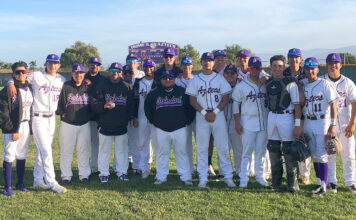SOLEDAD — Former Monterey County Water Resources Agency Board of Director Roger Moitoso talked water systems and the current water situation in Soledad.
“As we came into April 15, everything in the Valley, the upper valley, Arroyo Seco, everything to the west were back up to historical highs,” Moitoso said.
The Salinas River Channel merges two bodies of water during years where there has been an adequate amount of rain, and the San Antonio and Nacimiento reservoirs release water. The first body of water comes through the Bradley River up to King City and meets with the Arroyo Seco River.
“Arroyo Seco is 35 miles closer to the ocean than Bradley,” Moitoso said. “Then you can release water from Nacimiento and San Antonio behind those surges.”
According to Moitoso, on April 1 the ideal water situation would be Nacimiento Reservoir at 800 feet or 375,000 acre feet and San Antonio Reservoir at 780 feet or about 335,000 acre feet.
In the past there was 168 acre feet of surplus, but that changed due to the building of the Nacimiento Reservoir in 1957. The San Antonio Reservoir was built in 1967. The water from the reservoir would be released during the summer months to aid in the recharge of the aquifer.
“Part of the permit encouraged districts in Monterey County to look at recycled water,” Moitoso said. “They built a tertiary treatment plant out by Marina and we put in 12,000 acres of purple pipe so that we could use that tertiary treatment water around the Castroville area.”
According to Moitoso, the tertiary ended up being about 12,000 acre feet of treated waste water that replaced pumping. The water did not have to be pumped out of the aquifer.
“That helped start slowing the sea water intrusion problem with the dam,” Moitoso said. “That, coupled with San Antonio and Nacimiento, would catch the winter water and then release it during the summer.”
The water from the reservoirs would be released on April 15 with a goal of reaching the Chualar bridge. Moitoso said the idea was to release the water with the most chance of going into the underground aquifer recharge.
“We did that for 50 years, 1957 to 2007,” Moitoso said.
The spillway was determined to be too small, which caused the Monterey County Water Resources Agency to enter into an environmental study. The two options in the early 2000s was to either fix the spillway or build the Interlake Tunnel and transfer water from Nacimiento to San Antonio.










